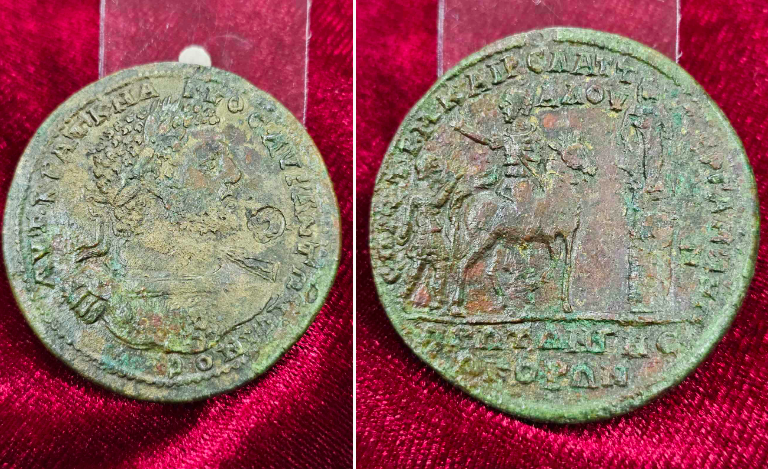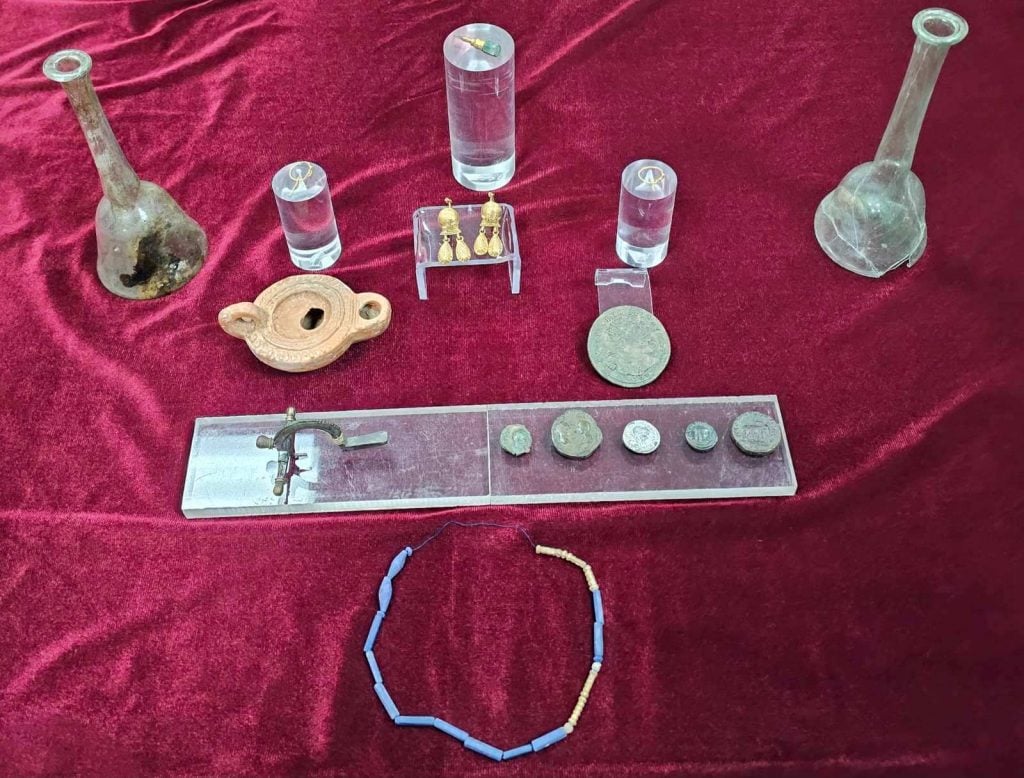Archaeology & History
A Bulgarian Farmer Uncovers an 1,800-Year-Old Family Necropolis
Researchers now hope to find the family's villa.

When a Bulgarian farmer plowed his tractor into a limestone grave late last year, local police were summoned under the assumption that a criminal case was at hand. In fact, the farmer had uncovered an 1,800-year-old family necropolis.
Beneath the soil, archaeologists from the Veliko Tarnovo Regional Museum of History who were contacted by the authorities found two graves, both formed of brick, plaster, and limestone. One held the remains of two middle-aged adults. The other contained the bones of a two- to three-year-old child.
“I think it’s a sad family story from the first half of the 3rd century,” lead archeologist Kalin Chakarov said of the find. “A dead infant, buried by their parents, who had their last resting place on the same spot where they buried their child.”

Roman-era artifacts were found by a farmer in the Bulgarian village of Nova Varbovka. Photo: Regional History Museum-Veliko Tarnovo.
In the 3rd century C.E., the area of northern Bulgaria in which the family necropolis was found stood inside the Roman province of Moesia, which included areas of modern-day Macedonia, Albania, Kosovo, Serbia, Romania, and Ukraine.
Initial research suggests the family were wealthy landowners with strong connections to Nicopolis ad Istrum, a regional center founded by Emperor Trajan during his Dacian Wars.
The limestone was mined from a quarry near the town and it was common practice for landowners to be buried on their estates. “The graves suggest a high status,” Chakarov said. “They are built with materials only the rich could afford.”
A further clue lies in a rare bronze medallion that was found in the child’s grave. Considered too high-value for everyday use, it was minted in Asia Minor, with one side showing the Roman Emperor Caracalla seeking out the god of medicine, Asklepios, during his Parthian War in 215 to 217 C.E. Poetics aside, this makes sense, researchers say, because the town of Nicopolis ad Istrum was built predominantly by settlers from Asia Minor.
In addition to the medallion, archeologists found a pair of small gold earrings, glass bead jewelry, amphora for wine, and two glass vessels for holding the tears of mourners, known as a lacrymatory. In the adult grave, they found ornate gold women’s earrings, a gilt pendant, a ceramic lamp, and a silver-plated broach used to tie clothing.
At present, the objects are still being researched by the team at the Regional History Museum. Archaeologists hope to conduct DNA analyses on the skeletons and to find the villa in which the family lived.





